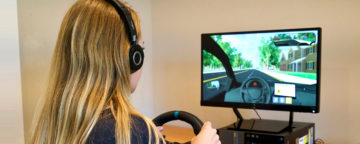Young people who use cell phones while driving are also more likely to engage in other risky driving behaviors, new research from Children's Hospital of Philadelphia and the Annenberg Public Policy Center finds.


Young people who use cell phones while driving are also more likely to engage in other risky driving behaviors, new research from Children's Hospital of Philadelphia and the Annenberg Public Policy Center finds.

Children’s Hospital of Philadelphia and APPC researchers have demonstrated the feasibility of incorporating a virtual driving assessment system into the driver’s licensing process in Ohio.

A new study from APPC and CHOP suggests that relatively slower growth of working memory is linked with teen driving crashes.

Teenagers with weaknesses in certain processes that are part of executive functioning are at a greater risk of hazardous driving, a literature review from researchers at APPC and CHOP has found.